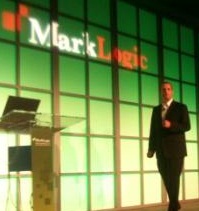
MarkLogic Extends Enterprise Readiness
This week, Silicon Valley-based MarkLogic introduced MarkLogic 5, which they claim drastically improves their abilities to manage complexity in large-scale enterprises dealing with massive amounts of data. The company says they have ahead of the big data buzz curve, pointing to a decade-long focus on real-time, mission critical applications.
 In addition to providing a few data integrity and management tools with the update, MarkLogic introduced some new features that are aimed at enhancing the product’s enterprise readiness.
In addition to providing a few data integrity and management tools with the update, MarkLogic introduced some new features that are aimed at enhancing the product’s enterprise readiness.
A big part of this news is that they’ve thrown in a bi-directional connector for Hadoop—not necessarily a surprising addition since it takes quite a bit to keep up without such capability these days—but nonetheless an important move for the company to extend further into the enterprise.
The company’s bi-directional connector for Hadoop lets users take advantage of Hadoop for batch ETL jobs to handle big parallel loads on their MarkLogic cluster and then also use it to reprocess or progressively enhance content in a MarkLogic 5 database to improve the quality of the content by applying a range of technologies, including facial recognition as one example.
According to MarkLogic CTO, Ron Avnur, there are three focus points the company has with this release, all of which are shaping their strategy in the coming months. These include building confidence at scale, making organizations better able to tackle enterprise big data in from a wider variety of sources, and more generally, a more refined ability to manage the complexity of structured, unstructured and semi-structured data.
In terms of the company approach to building “confidence at scale” Anvur says the company has created a multi-year roadmap to strengthen their enterprise readiness via database replication, disaster recovery and point in time recovery enhancements. He notes that in many organizations, there is a need to solve mission critical, high stakes problems on top of giant datasets with data coming in all the time with many concurrent users. While this adds to overall complexity (and possibly value) he says it is critical to make sure that MarkLogic 5 battens down the hatches and prepares for the unforeseen (user deletion of data, power outages, and any other datacenter calamities).
Avnur pointed to the ways that MarkLogic 5 is designed to seamlessly integrate into enterprise data centers, particularly on the storage front. He says that many organizations have a range of storage technologies, from NAS, SSDs and so on, but he says that with Mark Logic 5, there are built-in abilities to optimize performance by specifying the location of these for each node in the cluster and let ML5 optimize where documents are stored to improve performance. The management and monitoring tools help users keep an eye on the true performance benefits and they can now have out-of-the-box integration with Nagios and HP Operations Manager as well as an API to integrate other monitoring tools.


























